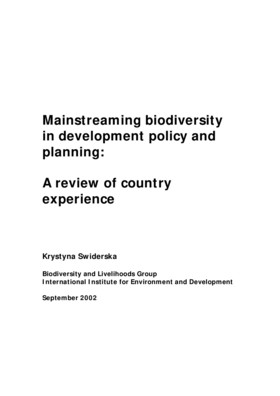Mainstreaming biodiversity in development policy and planning: A review of country experience

The Convention on Biological Diversity (CBD), agreed at the Rio Earth Summit in 1992, has three main objectives: the conservation of biodiversity, its sustainable use and the equitable sharing of benefits from the use of genetic resources. In order to
implement the Convention’s objectives in the national context, countries are required to develop national biodiversity strategies and action plans (NBSAPs), and to integrate biodiversity concerns into all sectors of then ational economy.
Integrating biodiversity objectives into mainstream development is a complex challenge that lies at the heart of the Convention, and a key objective of NBSAPs, which have now been completed in over 80 countries1. However, in all countries, North and South, there has been little progress with integrating biodiversity objectives in national development policy and planning, including important economic sectors (agriculture, forestry, energy etc). As a result, the objectives of the CBD continue to be undermined by mainstream development activities.
Cite this publication
Available at https://www.iied.org/g01228